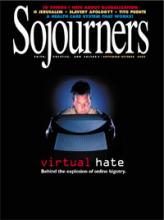The gap between rich and poor in the United States has grown by leaps and bounds in recent years. Consider these facts, most of them from a December 1999 report by United for a Fair Economy titled Divided Decade: Economic Disparity at the Centurys Turn.
In 1989, there were 66 billionaires in the United States and 31.5 million people living below the poverty line. In 1999, there were 268 billionaires and 34.5 million living below the poverty line.
At the end of 1999, the top one percent of households had more assets than the entire bottom 95 percent combined.
Between 1977 and 1999, the top 20 percent of households increased its annual after-tax income by 43 percent, while the middle fifth gained only 8 percent, and the bottom fifth lost 9 percent in after-tax income.
CEO compensation rose by 443 percent between 1990 and 1998, while average worker pay increased 28 percent, only slightly ahead of inflation.
A worker who earned $25,000 in 1994 would earn $138,350 today if worker pay had grown as fast as the average CEOs, according to the AFL-CIO.
The minimum wage used to bring a family of three with one full-time worker above the poverty line. Now it doesnt bring a full-time worker with one child above the poverty line.
The 1996 Census report shows a poverty rate for blacks of roughly 28 percent, for Latinos of 29 percent, and for whites of 11 percent.
Growing evidence from epidemiologists around the world shows that the greatest danger to public health is inequality of resources.
Read the Full Article
